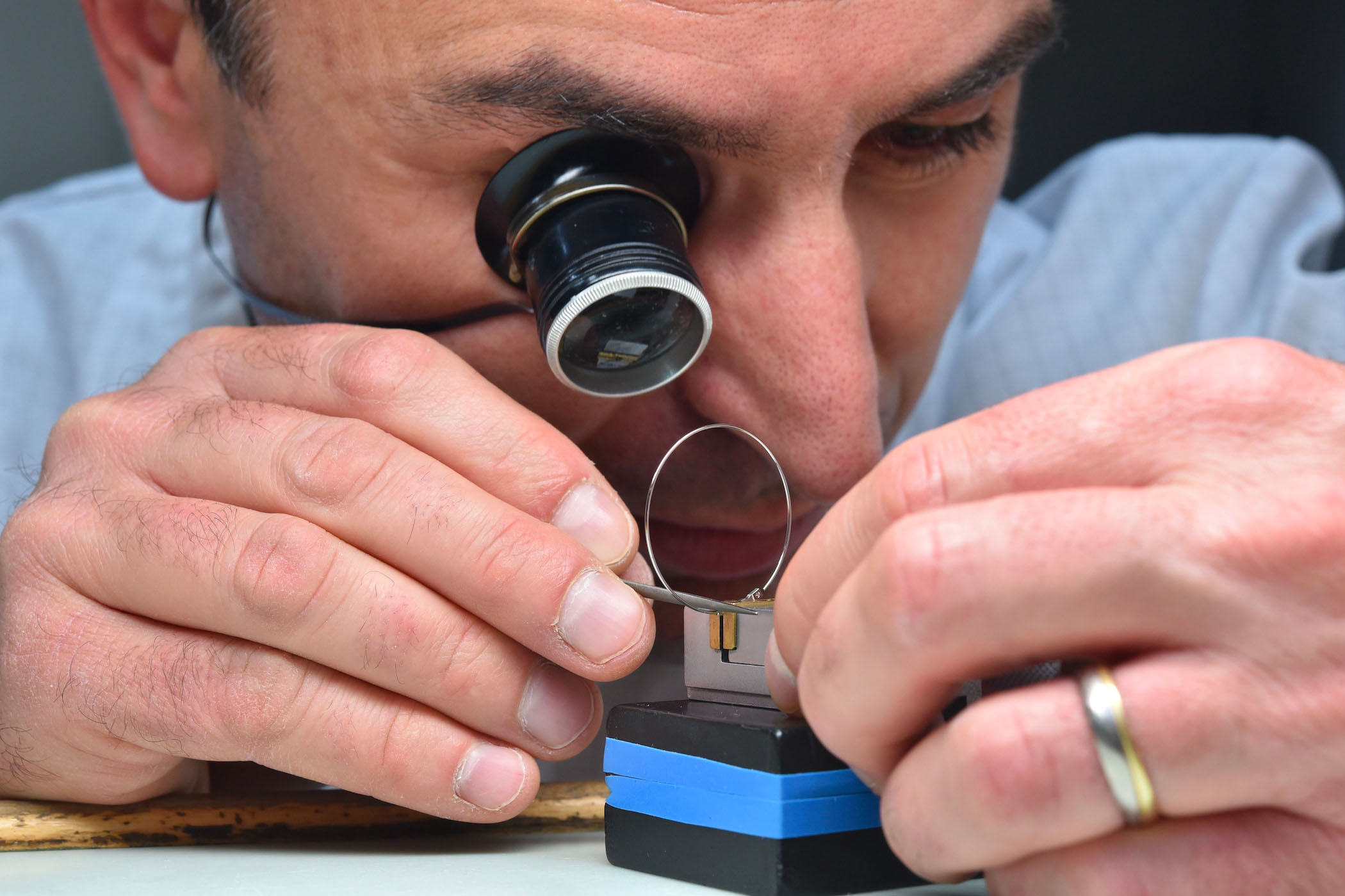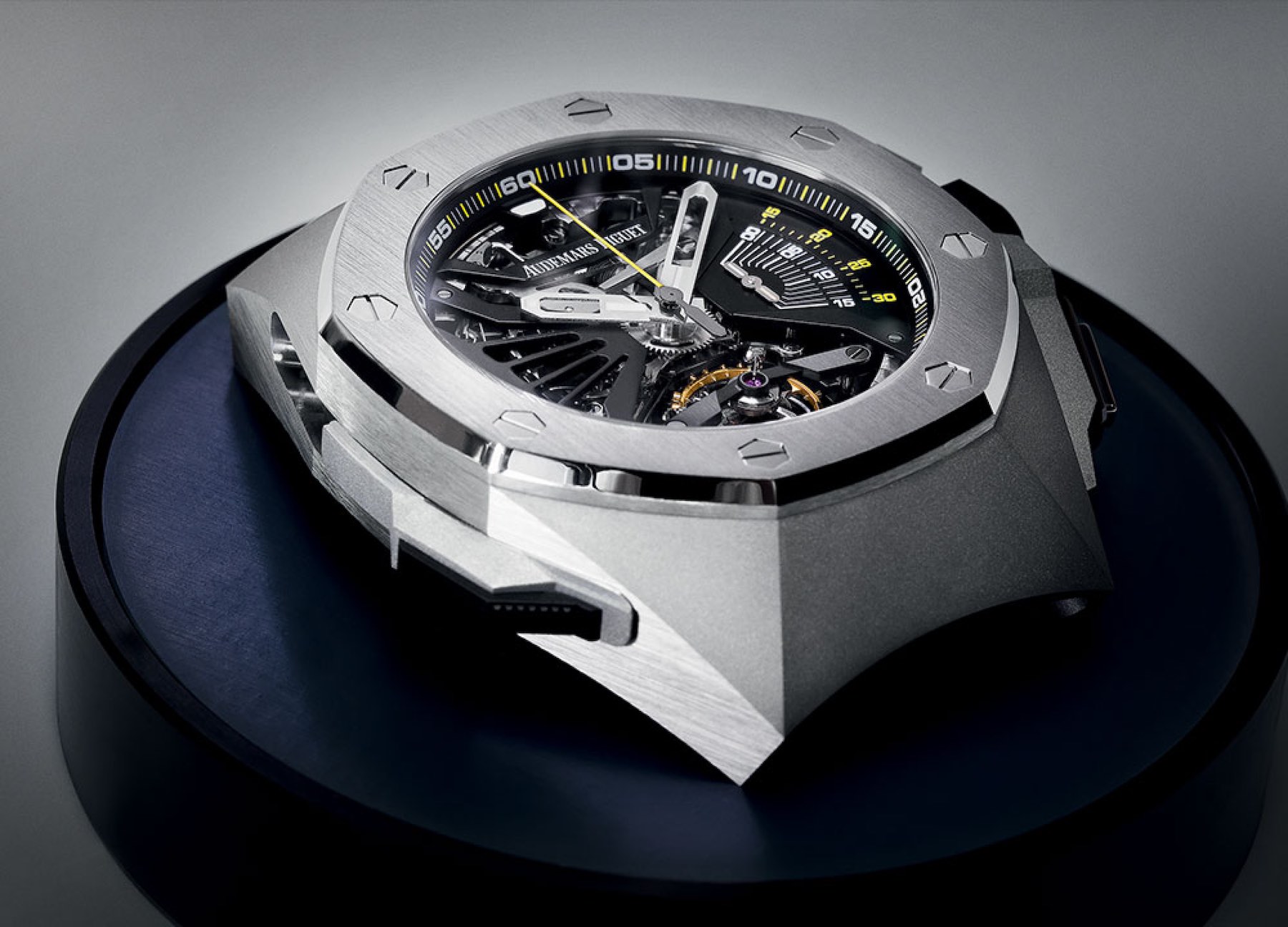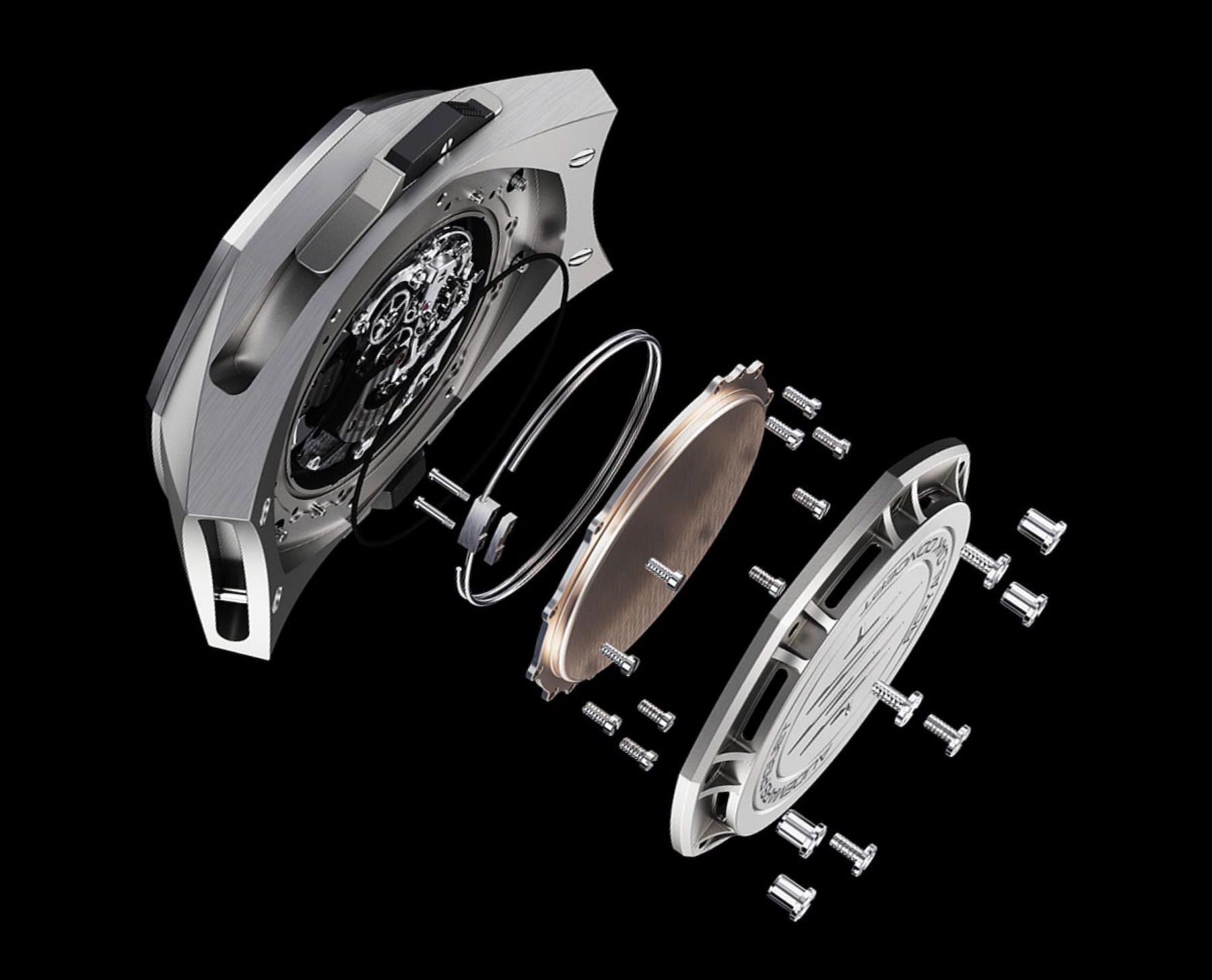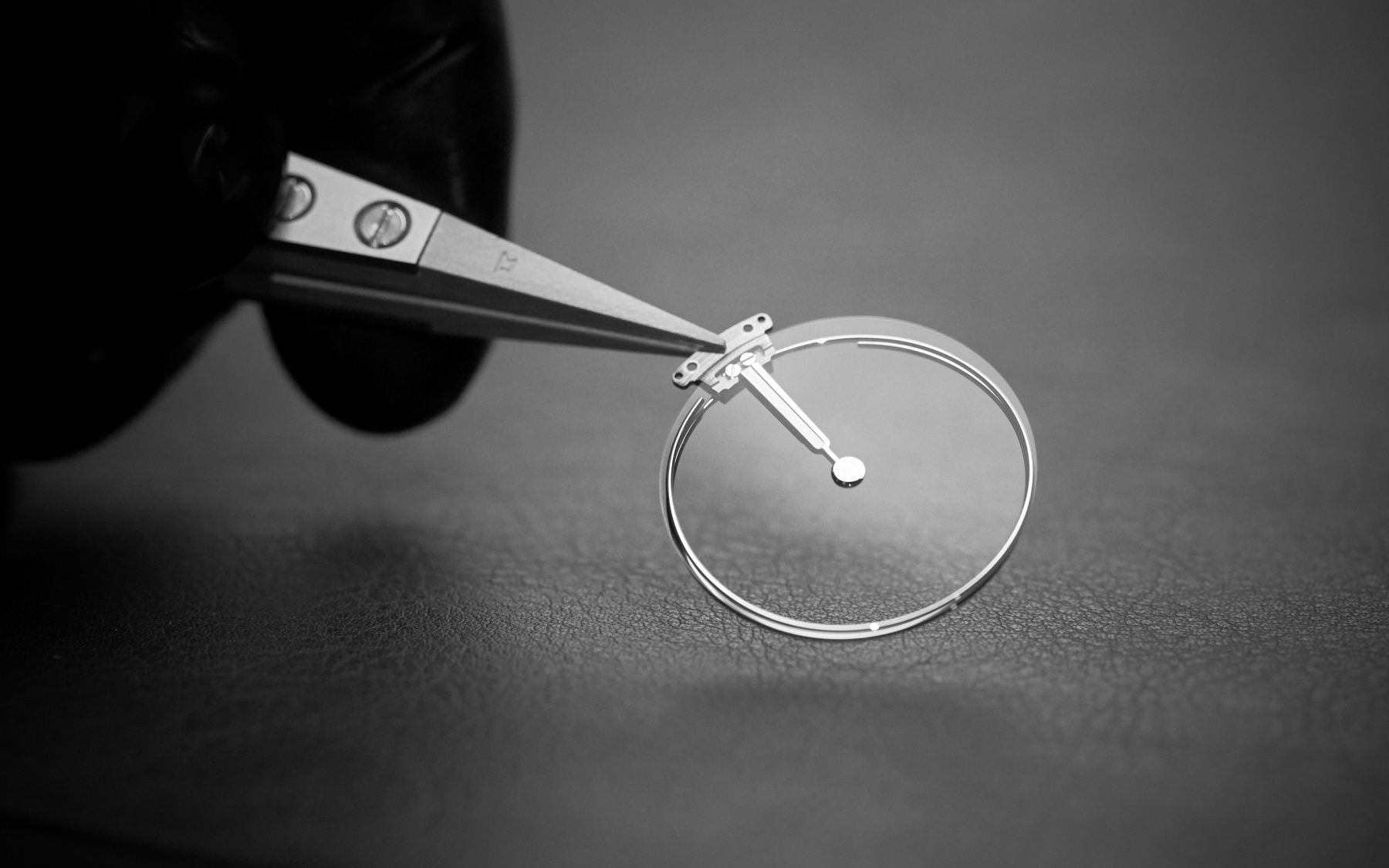In Search of the Perfect Sound, The Latest Solutions to Optimise Minute Repeaters
Clearer, louder, richer, more musical… watchmakers are back at the bench to make repeaters greater than ever.

Repeater clocks were invented well before electric lighting, in order to be able to consult the time in the dead of night. By activating a trigger or a pusher, a repeater chimes the time on demand and is often regarded, and rightfully so, as one of the pinnacles of mechanical watchmaking. Dozens of components, manufactured to exact tolerances, must be combined to orchestrate these extremely complex mechanisms. The quality of a minute repeater is also judged by the sound that it produces. Watchmakers pay utmost attention to their acoustic quality, patiently adjusting various parameters to reach the loudest, clearest and richest sound possible. The pace of the chime or the eventual background noise (the buzzing noise produced by the regulator) are also particularly important. In their quest to produce the ultimate minute repeater, watchmakers conduct sound research programs to optimise the chime of their watches.
In a minute repeater, sound is most of the time produced by small hammers striking gongs. Traditionally made of hardened steel and coiled around the periphery of the movement, the material used to craft the gongs, their shape and their length (cathedral gongs wrap around the movement almost twice to produce a richer sound) are crucial elements. And just like a musical instrument, the gongs must also be tuned. Of course, the work on sound optimisation includes many other parameters, including the case (its shape and material) and the crystal of the watch: everything is connected.

In the past few years, there have been some fascinating innovations. It all started in 2005 when Jaeger-LeCoultre patented crystal gongs that were directly soldered to the crystal of the watch, which in turn, acted as an amplifier. The brand also developed square-profile gongs and articulated hammers to ensure more consistent and powerful strikes.
The Audemars Piguet Supersonnerie
In 2015, Audemars Piguet presented the Royal Oak Concept RD#1 Supersonnerie with a brand new concept for the construction of the case and innovations on all levels of the movement, which will be available in the collection a year later, with the Royal Oak Concept Supersonnerie (ref. 26577TI).
The Supersonnerie mechanism endows this new minute repeater model with the volume and resonance usually associated with pocket watches. This patented technology results from 8 years of research in collaboration with EPFL, the Swiss Federal Institute of Technology in Lausanne. Inspired by the sonic power of older minute repeater watches as well as by the harmony of musical instruments, a dedicated community of watchmakers, technicians, academics and musicians reviewed the case construction to produce a new chiming technology. It has since been applied to an even more complex Grande Sonnerie Carillon.

Behind the Supersonnerie concept are several bright ideas. First is the overall construction of the watch, which has been imagined as a musical instrument, to be more precise, like an acoustic guitar. It means that the gongs behave like the strings, the hammers like the player’s finger and the internal soundboard – a new element visible through the slots on the caseback – acts as the instrument’s body and helps to amplify the sound. But there’s more than the amplifying construction of the case. For instance, AP has worked on a new method for pre-preparing the steel used to create the gong structure to achieve a unique sound. By studying the alloy composition, the material cross-section, the heating process, the length and rigidity of the gongs, AP has managed to improve the clarity and musicality of the chimes.
Another important improvement with Supersonnerie comes from the construction of the chiming elements. In a traditional chiming watch, the gongs are fixed to the movement’s mainplate. In the Supersonnerie watches, the coiled gongs are attached to a new device, a material spread beneath the movement that acts as a soundboard – thanks to a specific alloy that vibrates best. Now, the gongs transmit vibrations directly to the soundboard and not to the mainplate, thus improving the sound quality, the tone and the amplification of the sound.

Finally, Audemars Piguet has been working on an important mechanical element of a chiming watch known as the striking regulator. Also known as a governor, it sets the pace of the striking sequence of hours, quarters and minutes. It has been entirely redesigned to be more flexible and thus becomes a shock absorber so that unwanted shock noises are eliminated. This helps to reduce mechanical noises that would degrade the quality of the chimes heard by the wearer of the watch. If you combine these elements, the sound becomes clearer, richer, brighter and louder too, thanks to the amplifying construction.
The Chopard Full Strike
Presented in 2016, the Chopard Full Strike chimes the time on sapphire gongs that are an integral part of the watch glass. The sapphire crystal of the watch and the gongs are machined in one piece from a block of sapphire. Since fractures in material are detrimental to the transmission of acoustic waves, the sapphire creates a perfect loudspeaker to diffuse the sound of the strikes. The intensity of the sound is unique thanks to the excellent acoustic properties of sapphire crystal.

According to Chopard, the creation of the Full Strike required 15,000 hours of development and three patents were filed, including one for the single-piece sapphire block. Machining the gongs/glass alone required more than three years of development! Equipped with transparent sapphire crystal gongs that produce a clearer, purer tone than metal, the sound (tuned to notes C and F) is akin to someone tapping a wine glass with a knife.
In the same vein, Chopard has also been working on humming noises produced by the governor, which would degrade the musicality of the sound produced by the gongs. Also, a new architecture of the movement allows for the avoidance of silences between the hours being struck, the quarters being struck and the minutes being struck. A chime is generally punctuated by long silences. Not here. The structure of calibre L.U.C 08.01-L enables it to skip these silences automatically. Its hours, quarters and minutes gear trains are superimposed and mutually drive each other. When one has completed its task, it automatically triggers the next, maintaining a constant cadence.
There’s more to the Chopard Full Strike than just its crystal gongs. It’s also about energy management. The energy for the striking mechanism is stored in a dedicated barrel, and not generated by the actuation of a trigger – just like in a Grande Sonnerie watch. The crown serves to wind the movement in one direction, and its striking mechanism in the other. And thus, the minute repeater mechanism is actuated by a discreet pusher, and not by a large trigger on the side of the case.
The Patek Philippe Fortissimo FF amplifier
The latest development in the field comes from Patek Philippe with the 5750 Advanced Research Minute Repeater and its so-called Fortissimo “ff” amplifier module, presented in late 2021. The idea of Patek with this new member of the Advanced Research family was to improve the sound level, richness and musicality of the minute repeater by using novel techniques but traditional materials, or as explained by the brand “to amplify the volume of the time strike in a purely mechanical manner while preserving the excellent acoustic quality as well as the smallest possible dimensions.” And to do that, starting from the existing repeater calibre of the brand, the watchmakers of Patek have created a new module that works like a mechanical loudspeaker.
Usually, amplification of the sound does rely on a flexible diaphragm which like the skin of a drum is attached along its periphery. For its latest innovative model, Patek Philippe has developed something unprecedented, a solution for which Patek Philippe registered three patents has an oscillating wafer made of synthetic sapphire with a thickness of 0.2 mm. Thanks to its angular motion, this rigid and freely movable wafer provides clearly better sound propagation for the confined volume of a wristwatch. Plus, this allows to retain the sapphire caseback and thus the possibility to admire the movement.
To achieve sound transmission from the gongs of the minute repeater to the sapphire-glass oscillating wafer, the engineers developed a system with a steel sound lever that is attached in the middle of the oscillating wafer. The other end of this sound lever that resembles a tuning fork features a flexible attachment with a thickness of 0.08 mm. When the hammers strike the gongs, their oscillations are transmitted to the sound lever which in a first phase amplifies them and transmits them to the rigid oscillating wafer where they are further amplified. The angular motion of the oscillating wafer excites the air layers above and beneath the sapphire glass, producing a noticeably louder sound.
With the Patek Philippe Advanced Research 5750 Minute Repeater, the brand also worked on the propagation of the sound, in addition to amplifying it, by working on the case architecture. Classically in a repeater watch, the sound of the hammer striking the gongs is propagated through the entire watch, on all sides of the case, on the back and through the crystals. Thus, the choice of the material is crucial, as it will have a direct effect on the quality and loudness of the sound. Gold and platinum are denser and thus absorb the sound more than steel or even titanium.
In the Patek Philippe 5750 Advanced Research Minute Repeater with the fortissimo module, an insulation rim made of a high-tech composite material acoustically uncouples the amplifier from the movement. The sound is first routed to the sound lever and then to the oscillating wafer and subsequently propagated through four openings at 12, 3, 6, and 9 o’clock in a titanium ring. The sound waves exit through a narrow slot between the caseback and the caseband. Thus, the case material has no more influence on the sound of the watch.
Finally, the Patek Philippe Advanced Research team has worked on the loudness of the sound, but also on the quality, richness and musicality of the minute repeater. For instance, the length of the strike has been increased in order for the gongs to fade somewhat longer. Some evolutions have been done on materials too. Classically, hammers are made of steel but in this Advanced Research 5750 Minute Repeater, they are made of platinum – a patented solution that improves the quality of the strike.
For more details about each of these watches, please visit audemarspiguet.com, chopard.com and patek.com.
















2 responses
Thank you.
Excellent article.